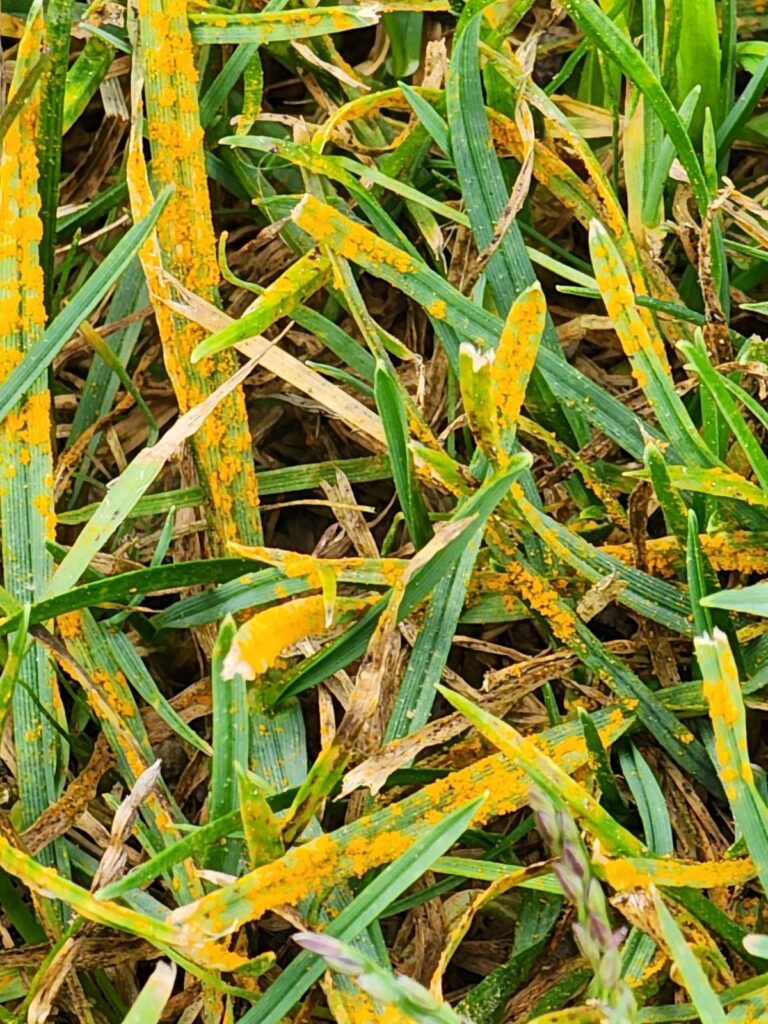"Conquering the Red Menace: A Rustic Journey to a Lush Lawn"

A lush, green lawn is the pride of every homeowner, but it can quickly turn into a source of frustration when lawn diseases like rust take hold. Lawn rust is a common fungal disease that can leave your grass looking like it’s been dusted with a reddish-brown powder. While it may not be as destructive as some other lawn diseases, it can still mar the beauty of your yard. Fortunately, there’s an effective solution to combat this pesky problem: sulfur. In this blog post, we’ll explore what lawn rust is, its causes, and how sulfur can help cure this disease and restore your lawn’s vibrancy.
Understanding Lawn Rust
Lawn rust is a fungal disease caused by several species of fungi, primarily Puccinia and Uromyces. It gets its name from the rust-like appearance it gives to affected grass blades. While it can affect various types of grass, it’s most common in Kentucky bluegrass, perennial ryegrass, and fescue. Lawn rust is more prevalent during late summer and early fall when conditions are typically warm and humid.
Signs of Lawn Rust:
- Reddish-brown or orange-yellow powdery spores on grass blades or shoes
- Reduced grass growth and vigor.
- Thinning of the lawn.
- Increased susceptibility to other lawn diseases and stressors.
How Sulfur Can Help Cure Lawn Rust
Sulfur is an effective and environmentally friendly treatment for lawn rust. Here’s how it works:
Fungistatic Properties: Sulfur has fungistatic properties, meaning it inhibits the growth and reproduction of fungi. When applied to the affected area, sulfur disrupts the lifecycle of rust fungi, preventing their spread.
Acidifying the Soil: Sulfur can lower the soil’s pH, making it less hospitable to rust fungi. Many rust fungi thrive in alkaline conditions, and by acidifying the soil, sulfur makes it more difficult for them to establish themselves.
Improved Nutrient Uptake: Sulfur enhances the availability of essential nutrients like iron in the soil. Grass with proper nutrient levels is better equipped to resist rust and recover from the disease.
Steps to Treat Lawn Rust with Sulfur:
Choose the Right Product: At Portage Turf we specialize in finding a solution to our customers problems. While our product will help lower the PH it also works to increase potassium levels which emelemtally work to fight multiple diseases in the lawn including rust.
Apply Sulfur: Apply sulfur to the affected area, ensuring even coverage. Water the lawn after application to help the sulfur penetrate the soil.
Maintain Proper Lawn Care: Regularly fertilize your lawn with nitrogen-rich fertilizer to promote healthy grass growth. Avoid excessive moisture by watering early in the morning and ensuring good drainage.
Improve Air Circulation: Trim back overhanging branches or tall plants that may be blocking sunlight and air circulation in your lawn.Yearly core aeration can also be beneficial in bringing oxygen into our compacted clay soils.
Conclusion
Dealing with lawn rust can be a challenging task, but with the right approach, you can restore your green oasis to its former glory. Sulfur is a valuable tool in the fight against this fungal disease, offering an effective and eco-friendly solution to your lawn problems. By addressing the causes of rust and incorporating sulfur into your lawn care routine, you’ll be well on your way to a healthier, rust-free lawn that you can enjoy year-round.





